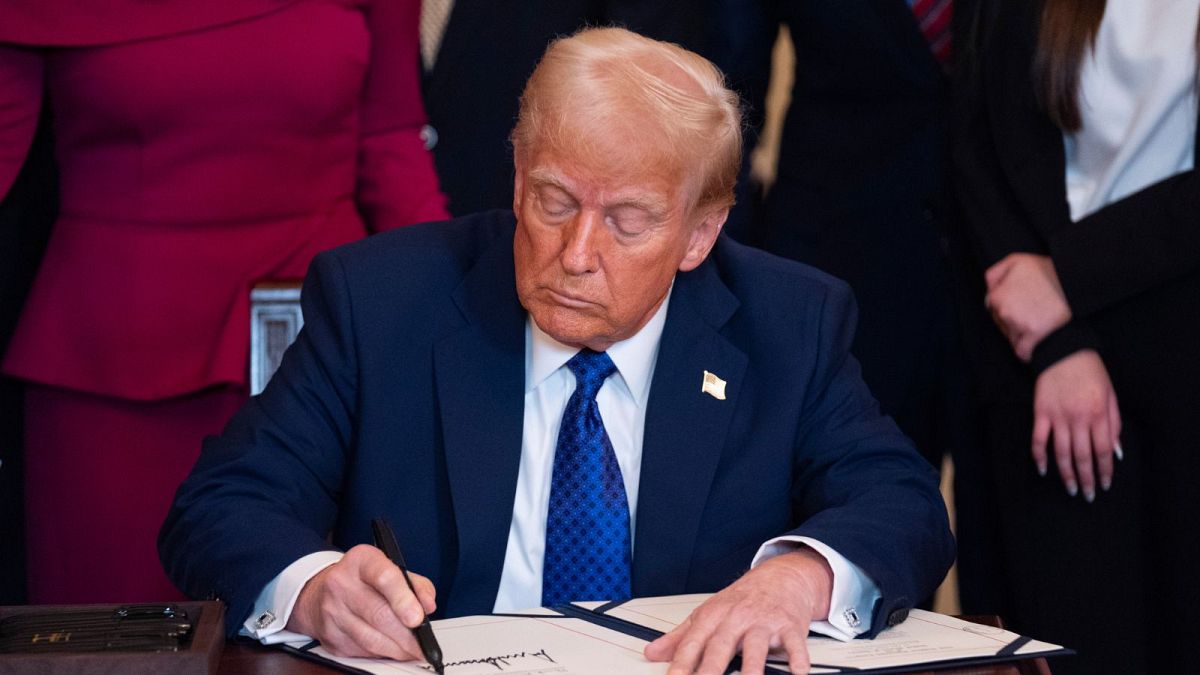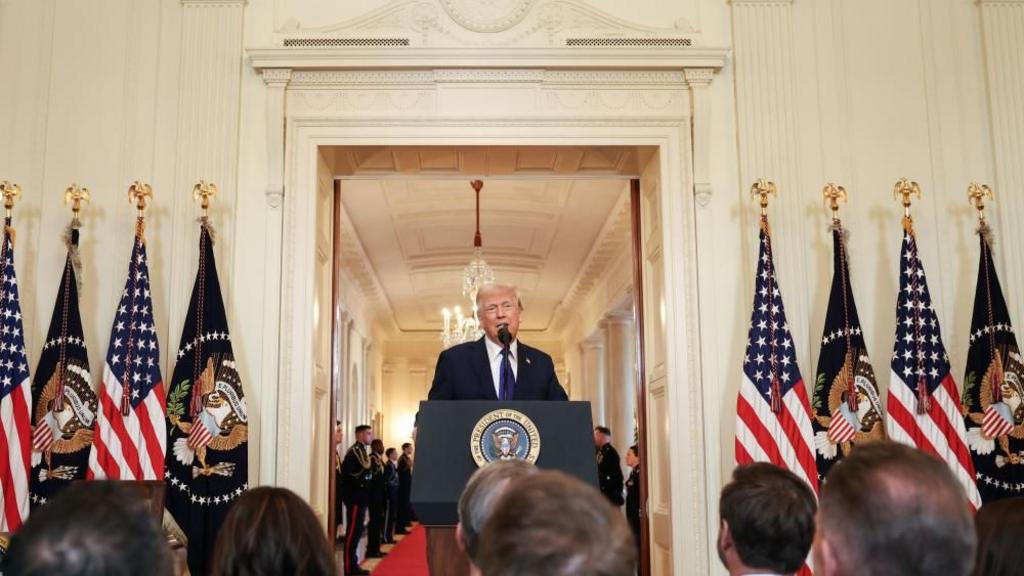
The Trump administration's $16 million expenditure on housing migrants at Guantanamo Bay’s naval base in Cuba has drawn significant attention and criticism. The operation, which was initially launched as part of President Donald Trump’s hard-line immigration policy, involved housing up to 30,000 migrants suspected of being in the U.S. illegally at the controversial Guantanamo Bay facility.
However, according to reports, the plan has largely been abandoned, with all detained migrants transferred out of Guantanamo Bay and relocated to Louisiana in recent days.
In January, President Trump announced plans to detain up to 30,000 undocumented immigrants at Guantanamo Bay ahead of deportation as part of his broader crackdown on illegal immigration. Trump signed an executive order directing the Department of Defense (DOD) and the Department of Homeland Security (DHS) to begin preparations for a massive migrant detention facility at the military base.
Guantanamo Bay, primarily known for its infamous detention center established after the September 11, 2001, terrorist attacks, was selected by the Trump administration due to its remote location and existing infrastructure. Trump’s plans included housing migrants in military tents, with the idea of creating a facility to hold those awaiting deportation.
The idea of using Guantanamo Bay as a location for migrants was part of the administration's broader push to implement stricter immigration policies.

The situation at Guantanamo Bay, however, has become a source of controversy, with reports revealing that the cost to establish the migrant detention facility was a staggering $16 million. According to Rep. Sara Jacobs (D-Calif.), who toured the facilities, each tent used to house the migrants cost approximately $3.1 million to construct, despite not meeting DHS standards for detention.
The tents, reportedly, lacked basic amenities required by the DHS, including air-conditioning, which is considered essential for maintaining acceptable living conditions in migrant facilities.
Jacobs, who was part of a bipartisan delegation from the House Armed Services Committee, criticized the plan as overly costly and impractical. “It seems clear there's no plan to get to 30,000 that's workable in any way,” Jacobs said, adding that the situation at Guantanamo Bay revealed the failure of the initiative.
The migrant camp at Guantanamo Bay faced numerous logistical challenges, including its inability to meet DHS requirements for migrant detention. According to ABC News, the tents did not comply with ICE’s regulations, including provisions for air-conditioning and other necessary amenities.
The news outlet also reported that some of the hundreds of U.S. troops initially sent to Guantanamo Bay to prepare the base for migrant housing may be reassigned to assist with the southern border mission, highlighting the inefficiencies of the operation.
The reality of housing migrants at Guantanamo Bay led to widespread criticism from both political leaders and human rights organizations. The American Civil Liberties Union (ACLU) expressed strong opposition to the idea, calling it both illegal and illogical.
Lee Gelernt, lead counsel and deputy director of the ACLU’s Immigrants' Rights Project, condemned the plan as an “abusive” approach. "Sending immigrants to a remote abusive prison is not only illegal and unprecedented, but illogical given the additional cost and logistical complications. Ultimately this is about theatrics," Gelernt said.
The notion of housing migrants at a maximum-security military prison also raised concerns about the human rights implications. Guantanamo Bay has long been criticized for its treatment of detainees, and the idea of using the base to detain non-criminal migrants, many of whom are seeking asylum, has been viewed as cruel and inhumane by critics.

By the end of this week, all 41 migrants who had been detained at Guantanamo Bay were transferred to Louisiana. The migrants, who had been awaiting deportation, were flown on non-military aircraft to the Alexandria, Louisiana, processing facility.
Reports indicate that the migrants were split nearly evenly between low and high threat levels. While the majority of the detainees have been relocated, the transfer has done little to quell the criticism surrounding the Guantanamo Bay detention center.
The transfer marks the end of Trump’s controversial plan to use Guantanamo Bay as a holding facility for migrants, and there have been no further flights scheduled to take migrants to the base. The initiative, which cost taxpayers millions of dollars, has proven to be inefficient and largely ineffective.
Trump’s plan to use Guantanamo Bay as a facility for migrant detention has been met with fierce opposition from both Democrats and human rights groups. Rep. Jacobs, who was part of the delegation that visited Guantanamo Bay, expressed her frustration with the administration’s handling of the issue.
In a statement on social media, she wrote, "I'm not surprised that ICE has transferred all immigrants from Guantanamo Bay back to stateside facilities. When I was there, it was clear that this 'plan' was too costly, complicated, inefficient and cruel."
President Trump, however, remained firm in his defense of the policy, insisting that the initiative was necessary to handle the "worst criminal illegal aliens threatening the American people." On January 29, Trump announced, "We have 30,000 beds in Guantanamo to detain the worst criminal illegal aliens threatening the American people.
Some people are so bad, we don’t even trust the countries to hold them because we don’t want them coming back, so we're going to send them out to Guantanamo."
Secretary of Defense Pete Hegseth also defended the plan, claiming that Guantanamo Bay was the perfect place to house migrants and hardened criminals. "It's the perfect place to provide for migrants who are traveling out of our country through gray tails or other assets, but also hardened criminals.
Where are you going to put Tren de Aragua before you send them all the way back? How about a maximum security prison at Guantanamo Bay, where we have the space," Hegseth said.
Despite these defenses, the general consensus among critics is that the plan was wasteful, ineffective, and ultimately harmful to migrants who were detained in substandard conditions.

The fate of the Guantanamo Bay migrant facility remains unclear, as no further plans have been made to house migrants at the base. While the relocation of migrants to Louisiana may have marked the end of the program, the broader implications of Trump’s immigration policies are far from over.
As the 2024 presidential election approaches, Trump’s hardline stance on immigration is likely to remain a central issue. However, the failure of the Guantanamo Bay migrant facility serves as a reminder of the challenges that the Trump administration faces in implementing its controversial immigration policies.
The inefficiency, high costs, and human rights concerns surrounding the Guantanamo Bay operation have left many questioning the effectiveness of Trump’s broader approach to immigration reform.
-1750069342-q80.webp)
-1741775521-q80.webp)

